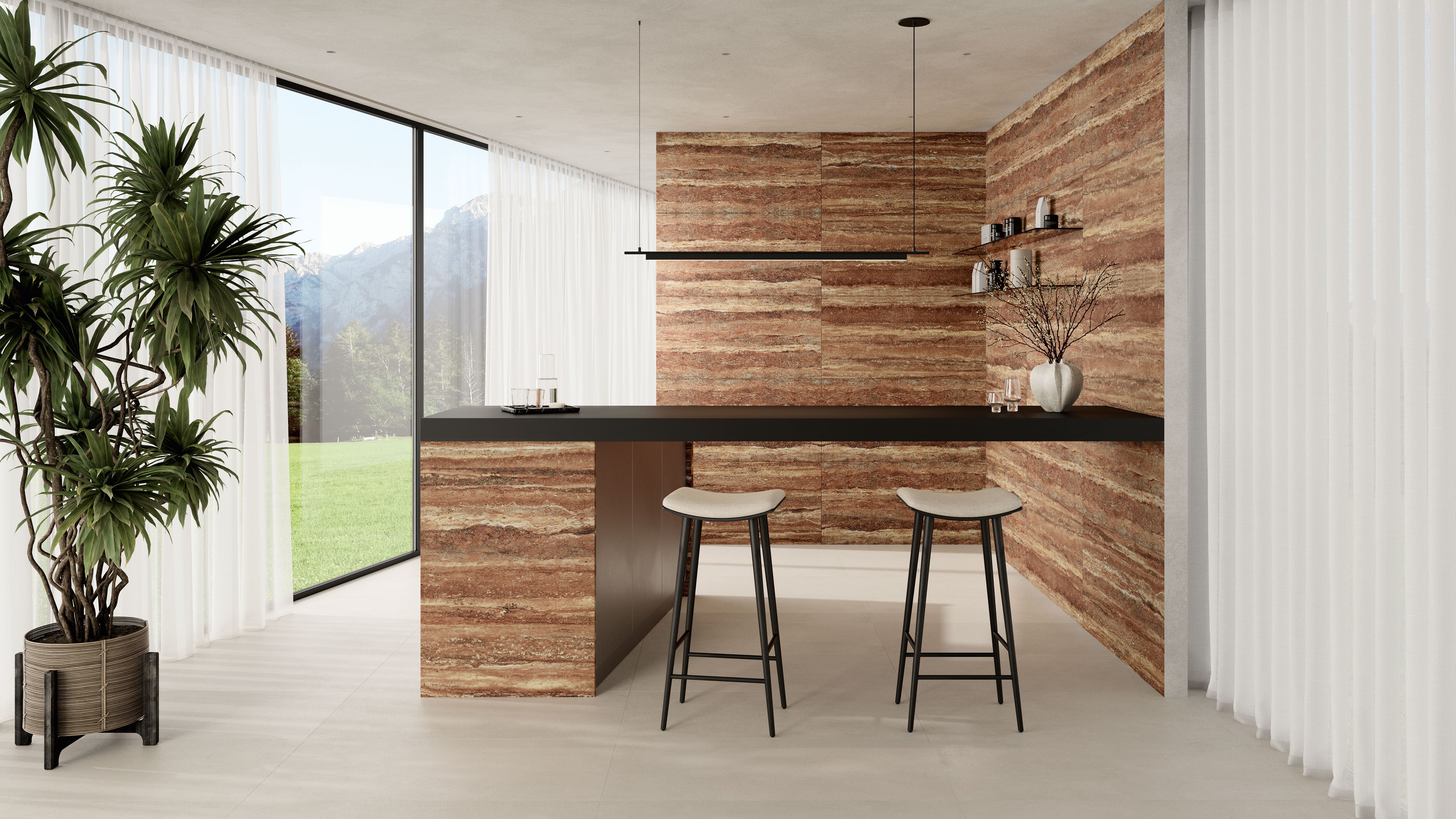Tile & Carbon
How MILE®stone porcelain tile reduces a building’s embodied carbon.
Florim USA recognizes the climate crisis is upon us and that it’s time to take responsibility.
Embodied Carbon FAQ
What is embodied carbon?
Embodied carbon is the sum of all the greenhouse gas emissions (mostly carbon dioxide) resulting from the mining, harvesting, processing, manufacturing, transportation and installation of building materials. The global warming emissions associated with these materials, along with emissions associated with construction itself, are the “embodied carbon footprint” of design and construction. Smart choices during design can greatly reduce this footprint. Florim USA takes several steps to reduce the embodied carbon of our product. Some of these steps are:
- +95% of all raw materials come from within 500 miles of the Clarksville Tennessee manufacturing location. This results in low transportation related carbon emissions.
- Grout and mortars have low embodied carbon.
- Porcelain tile is 100% made from inorganic, non-carbon containing raw materials.
What are the impacts of embodied carbon?
Porcelain tile contains the least embodied carbon of any competitive floor covering. This is partly due to its long useful life thus avoiding replacement. Thoughtful selection of timeless porcelain tile designs results in a floor or wall covering that can easily last the life of the building resulting in reduced carbon emissions from manufacturing, construction, demolition, and waste management.
What about existing buildings and materials?
Porcelain tile is readily used in renovation projects. Leveling mortars, which may be necessary in a remodel, have very low embodied carbon resulting in a complete installation with significantly less embodied carbon than carpet or LVT.
How do you calculate carbon?
Florim has prepared an EPD for all tile manufactured at the Clarksville factory to support analyses of low embodied carbon in tile installations. There is also an industry wide EPD for the porcelain tile industry in the US to support broader comparisons of flooring types.
How MILE®stone Porcelain Tile Reduces A Building’s Embodied Carbon?
According to third party review, porcelain tile has a useful life of at least 75 years. This longevity ensures reduced repair, demolition and disposal requirements resulting in reduced energy demand and transportation needs with corresponding reductions in carbon emissions.
According to third party review, porcelain tile has a useful life of at least 75 years. Thoughtful selection of timeless porcelain tile designs results in a floor or wall covering that can easily last the life of the building, without requiring replacement, resulting in reduced carbon emissions from manufacturing, construction, demolition, and waste management.
Porcelain tile is readily used in renovation projects. Leveling mortars have very low embodied carbon resulting in a complete installation with significantly less embodied carbon than carpet or LVT.
Both industry-wide and Florim specific EPDs are available to support verification of low embodied carbon in tile installations. MILE®stone tile has an exceptionally high recycled content, which provides an embodied carbon reduction due to reduced extraction, transportation, and processing requirements. This reuse of materials avoids the mining of virgin raw materials and in some cases avoids or minimizes transportation requirements. Both actions reduce embodied carbon by avoiding the expenditure of energy. The wide range of available porcelain tile sizes aids in producing a design with low material waste.
The Florim factory in Clarksville, Tennessee is within 500 miles of 1/3 of the US population. This easy access to such a large population base reduces transportation and its associated carbon emissions.
Over 95% of the raw materials used in the production of MILE®stone tile are sourced within a 500-mile radius of the Clarksville factory. This central location ensures transportation efficiency resulting in low carbon emissions from raw material transportation.
Porcelain tile has the lowest embodied carbon of any competing flooring product. Through our high recycled content and other recycling efforts, Florim is a major player in the circular economy.
How can Florim USA porcelain tile contribute to lower embodied carbon in the built environment?
Porcelain tile is the lowest embodied carbon flooring option so such a long-term scheme would avoid the carbon loads of replacement flooring materials such as carpet or LVT.
How does porcelain tile reduce operational carbon in the built environment?
Order Samples










